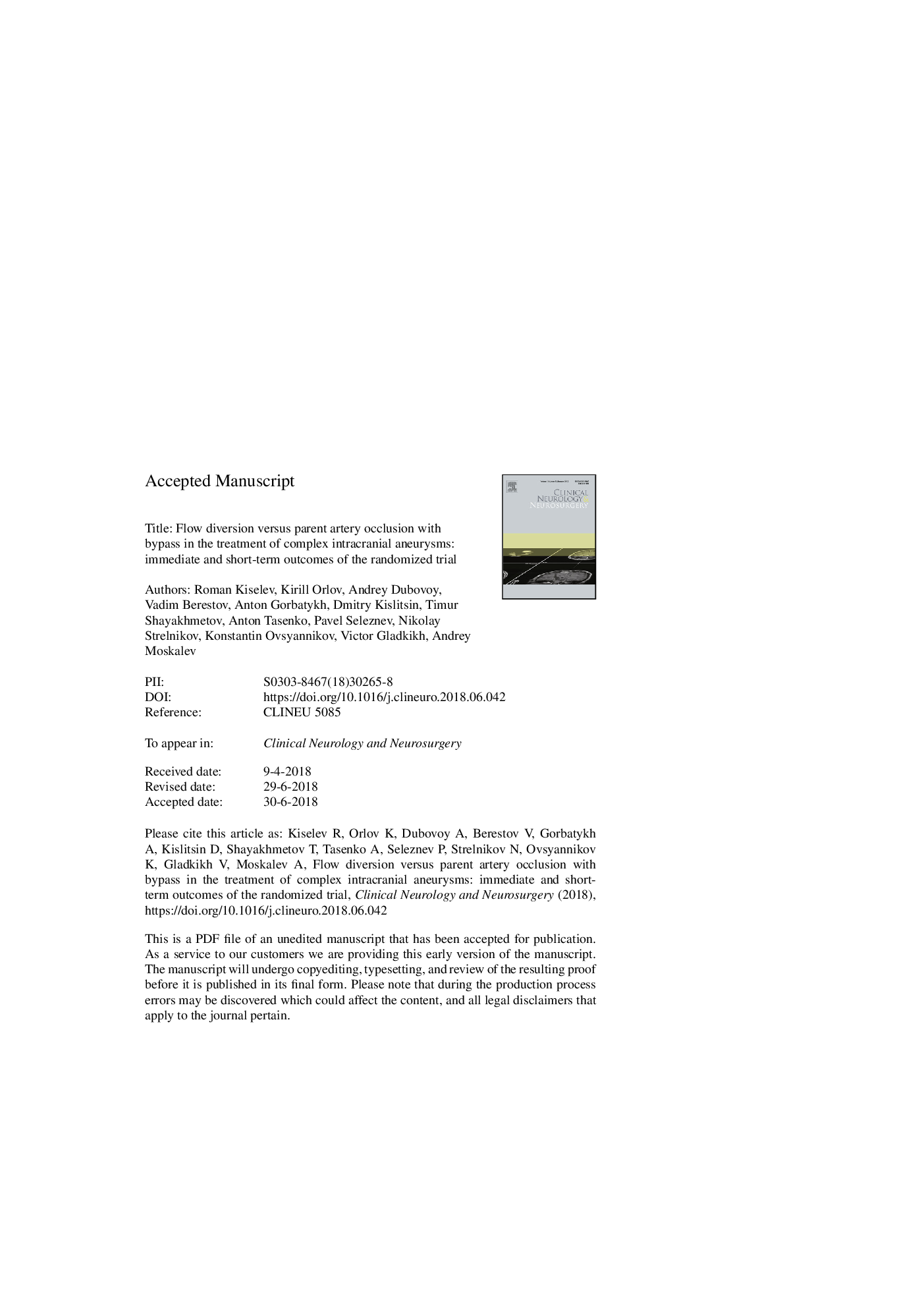| Article ID | Journal | Published Year | Pages | File Type |
|---|---|---|---|---|
| 8681673 | Clinical Neurology and Neurosurgery | 2018 | 27 Pages |
Abstract
The study demonstrated superior clinical outcomes for endovascular flow diversion in comparison with bypass surgery in treatment of complex aneurysms. Though, both techniques grant similar percentage of major neurologic complications and comparable cure rate for cranial neuropathy. Nevertheless, flow diversion is associated with significantly lower early obliteration rate, thus possesses patient for risks of prolonged dual antiplatelet regimen and delayed rupture. Hence, it's important to stratify patient by the natural risk of aneurysm rupture prior to treatment selection.
Keywords
DATPSMAcomADSAPVOPEDLTABTODWIICG-VAMRSSSEPSACACAParent vessel occlusionPAOCTAICAMCAIndocyanine green videoangiographyballoon occlusion testAneurysmDigital subtraction angiographyComputed tomography angiographyscATMRILight transmission aggregometryParent artery occlusionRevascularizationDiffusion weighted imagePropensity score matchingFlow diverterPipeline embolization deviceAnterior communicating arteryanterior cerebral arterymiddle cerebral arteryinternal carotid arteryFReDModified Rankin scaleBypassSomatosensory-evoked potentialStent-assisted coiling
Related Topics
Life Sciences
Neuroscience
Neurology
Authors
Roman Kiselev, Kirill Orlov, Andrey Dubovoy, Vadim Berestov, Anton Gorbatykh, Dmitry Kislitsin, Timur Shayakhmetov, Anton Tasenko, Pavel Seleznev, Nikolay Strelnikov, Konstantin Ovsyannikov, Victor Gladkikh, Andrey Moskalev,
